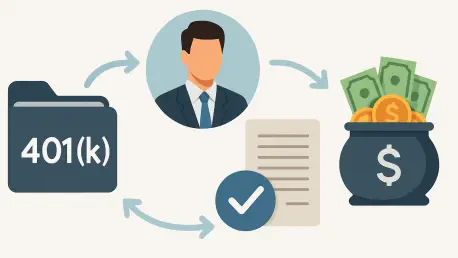Navigating the complexities of retirement savings can be daunting, especially when considering a 401(k) rollover after changing jobs or nearing retirement. This process, which involves transferring funds from an employer-sponsored plan to another retirement account, requires careful planning to avoid costly mistakes like tax penalties or excessive fees. A poorly executed rollover could jeopardize long-term financial security, making it essential to approach this decision with a clear strategy. The stakes are high, as the choices made during this transition can impact the growth and accessibility of retirement savings for decades. Understanding the nuances of this financial move is critical for anyone aiming to preserve their nest egg while aligning with personal retirement goals. This article outlines key steps to ensure a smooth and effective rollover, providing actionable guidance to safeguard savings.
1. Assess Plan Policies and Options
Before initiating a 401(k) rollover, a thorough review of the existing employer-sponsored plan’s rules is necessary. Some plans permit funds to remain in the account even after employment ends, while others mandate a transfer within a specific timeframe. Understanding these policies helps establish a realistic timeline and identifies available choices, preventing hasty decisions that could lead to unintended consequences. This step is crucial for maintaining control over retirement funds and avoiding potential fees or restrictions that might arise from overlooking plan specifics. Additionally, knowing whether a rollover is mandatory or optional allows for better planning and coordination with future financial goals. Taking the time to request detailed documentation from the plan administrator can clarify any ambiguities and ensure compliance with all requirements. This foundational knowledge sets the stage for a well-informed decision-making process, reducing the risk of errors during the transition of retirement savings to a new account.
2. Evaluate Goals and Tax Implications
Defining retirement objectives is a pivotal step in the 401(k) rollover process, as it shapes the choice of the receiving account. For individuals prioritizing stability, transferring funds into an IRA with conservative investment options might be ideal, while those focused on growth could opt for accounts offering broader investment opportunities. This decision hinges on factors like the timeline to retirement and risk tolerance. Equally important is understanding the tax implications of the rollover method chosen. A direct rollover, where funds move straight from the 401(k) to another account, avoids immediate taxes, whereas an indirect rollover, involving a personal distribution, carries a 60-day deadline to redeposit the money to prevent taxation and a mandatory 20 percent withholding by the employer. Missing this deadline results in significant financial loss unless the withheld amount is covered from personal funds. Carefully weighing these aspects ensures that retirement savings remain intact and aligned with long-term financial aspirations.









